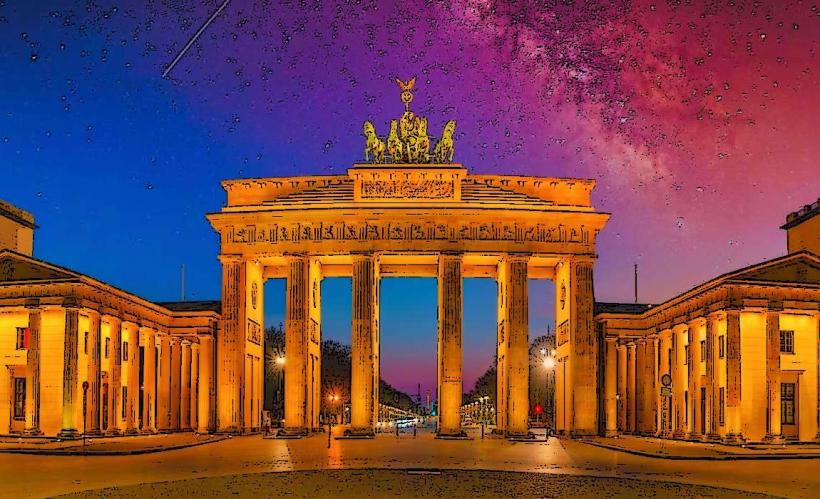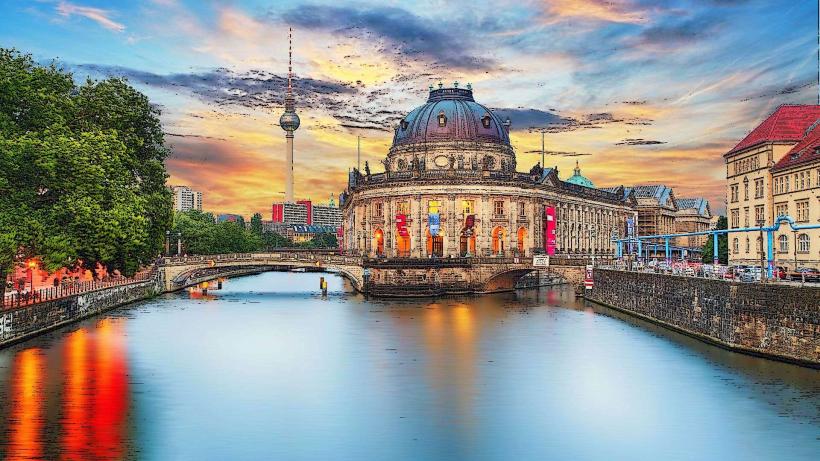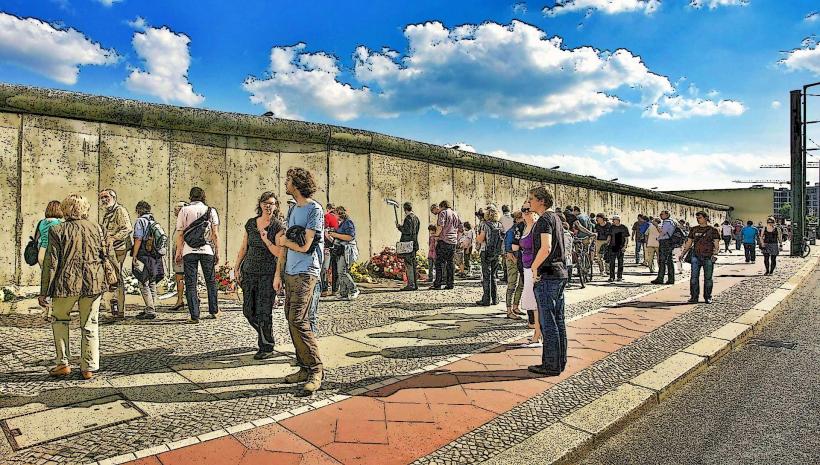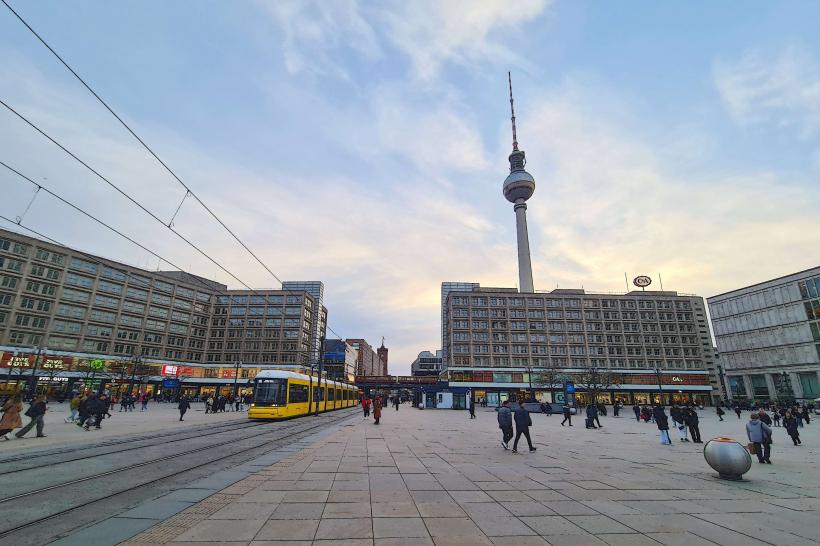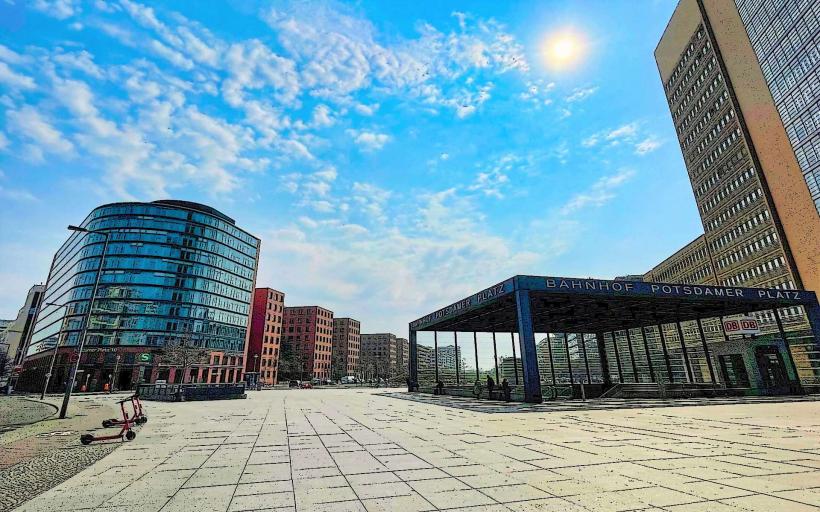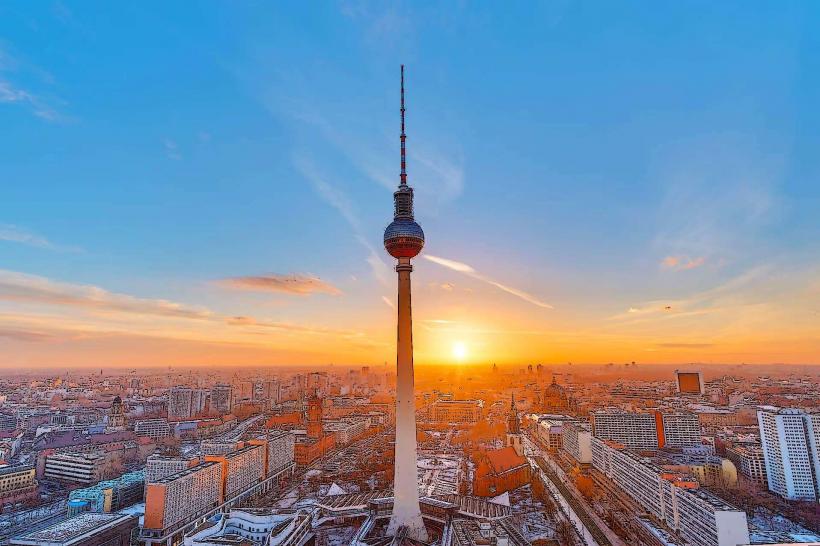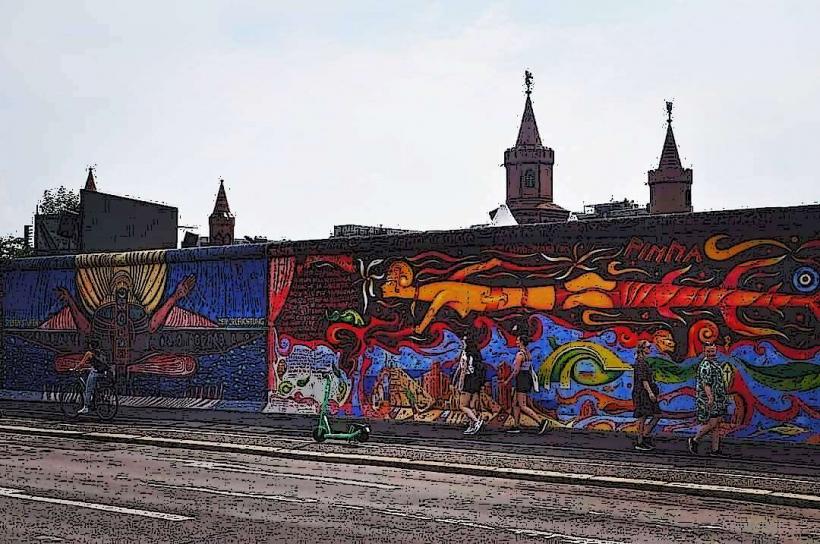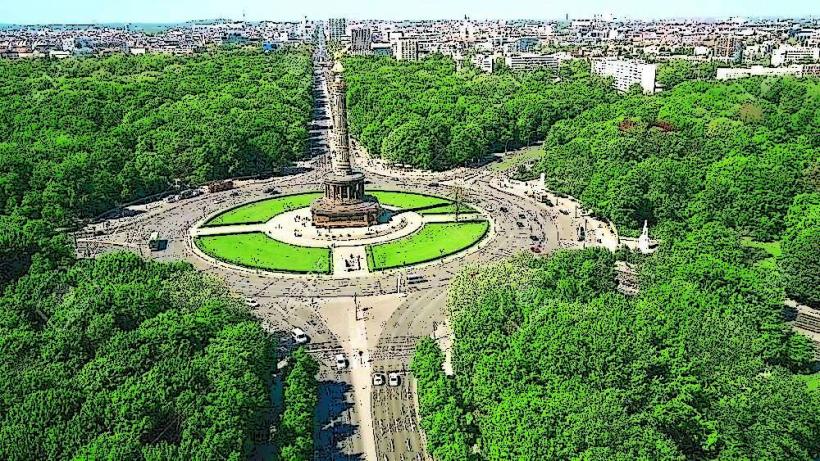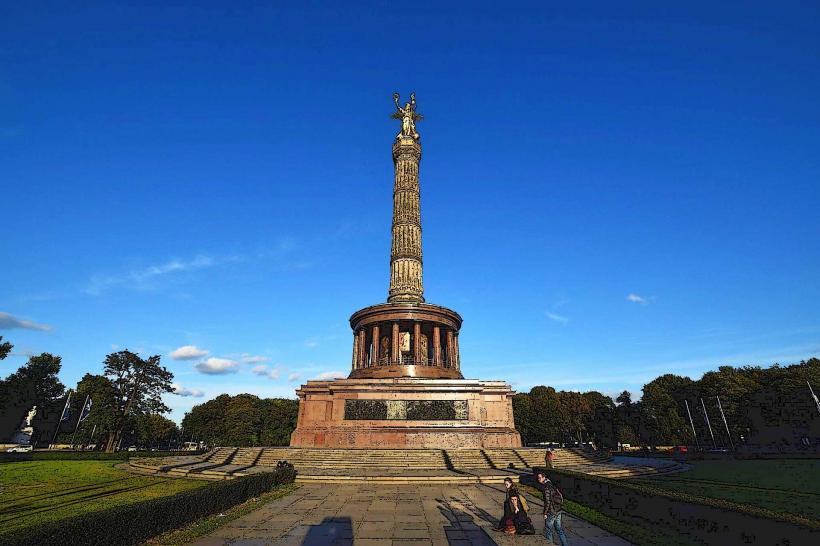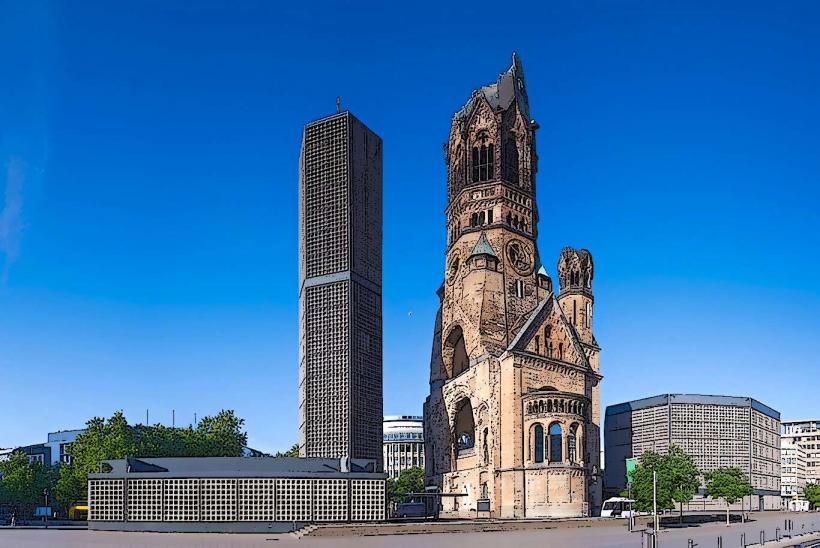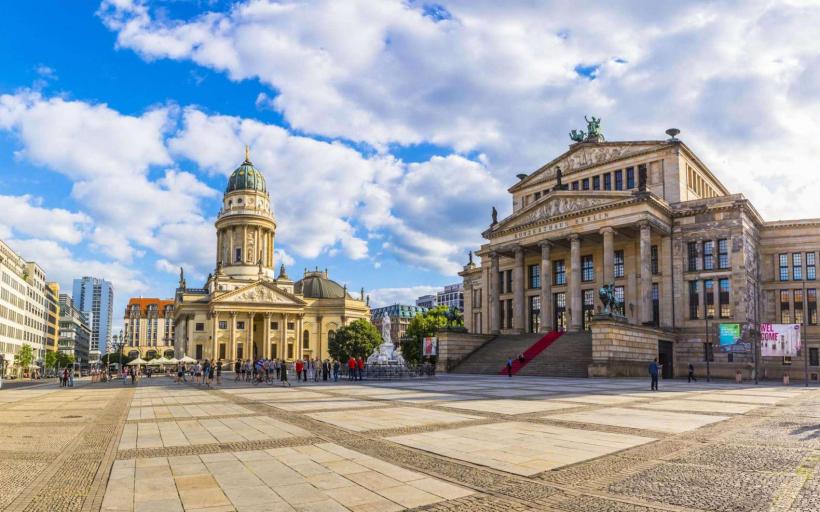Information
Landmark: Charlottenburg PalaceCity: Berlin
Country: Germany
Continent: Europe
Charlottenburg Palace (Schloss Charlottenburg) is one of Berlin’s most magnificent and historic landmarks. Located in the Charlottenburg district, it is the largest palace in Berlin and a symbol of the grandeur and opulence of the Prussian monarchy. The palace’s stunning architecture, extensive grounds, and rich history make it a popular tourist destination and an important cultural site in the city.
1. History and Background
- Construction: Charlottenburg Palace was originally built in 1695 by the Great Elector Frederick William as a summer residence for his wife, Sophia Charlotte of Hanover. The initial design was modest compared to the later expansions, reflecting the early Baroque style.
- Expansion under Frederick the Great: The palace underwent significant expansion in the 18th century under the rule of Frederick the Great’s successors. His successor, Frederick William I, enlarged the palace in a more Rococo style, and his son, Frederick II (Frederick the Great), added the west wing with a large hall for entertaining guests.
- Sophia Charlotte: The palace was named in honor of Sophia Charlotte, who was deeply involved in the intellectual and cultural life of the time. She was the sister of George I of Great Britain and had a passion for the arts, science, and philosophy.
- Royal Residence: Charlottenburg remained a royal residence throughout the 18th and early 19th centuries. After Prussia became a kingdom in 1701, it became the residence of the kings of Prussia, particularly during the reign of Frederick the Great.
2. Architecture and Design
- Baroque and Rococo Styles: The palace blends Baroque and Rococo architectural styles. The original structure, designed by architect Johann Arnold Nering, was influenced by the Baroque style, with symmetry, grandeur, and attention to detail. The later additions, especially those commissioned by Frederick William I, incorporated more Rococo elements with ornate decorations, elegant spaces, and delicate motifs.
- The Central Dome: The palace’s most striking feature is its central dome, which stands above the main building and serves as a symbol of the palace’s prominence. The dome is flanked by two wings, each housing different rooms and halls.
- Palace Grounds: The Charlottenburg Palace Gardens are an integral part of the palace complex. The gardens, originally designed in the Baroque style, were later redesigned in the English Garden style during the 19th century. They feature wide paths, sculptures, fountains, and lush greenery.
- Orangery and Pavilion: The palace also includes an orangery (a greenhouse for citrus plants) and a pavilion. These structures are part of the palace’s grand gardens and provide a tranquil space for relaxation and entertainment.
3. Key Features and Rooms
- The Great Hall (Großer Saal): One of the most significant rooms in Charlottenburg Palace, the Great Hall was designed for royal celebrations and gatherings. The room is grandly decorated with mirrors, chandeliers, and beautiful paintings.
- The Porcelain Room (Porzellankabinett): This room is famous for its exquisite collection of Meissen porcelain, one of the most renowned porcelain brands in Europe. The porcelain decorations on the walls and furniture give the room an air of refined luxury.
- The Bedroom of Queen Sophie Charlotte: The room where Sophia Charlotte lived features delicate Rococo furnishings and a peaceful, elegant design. It reflects the queen’s tastes, which included fine art, scientific works, and intellectual pursuits.
- The Golden Gallery (Goldene Galerie): This gallery is a masterpiece of Rococo architecture, featuring intricate gilded decorations and ornamental details. It leads visitors to the more private chambers of the royal family.
- The Picture Gallery: The Picture Gallery displays a rich collection of 18th-century paintings, reflecting the art collections of the royal family. It includes works from renowned artists of the time, emphasizing the royal family’s appreciation of the arts.
4. Historical Significance
- Prussian Royalty: Charlottenburg was an important residence for Prussian royalty and played a key role in the royal court. It was used by Frederick the Great during his reign in the 18th century, and it remained a royal residence until the end of the German Empire in 1918.
- World War II Damage: During World War II, much of the palace was damaged in air raids, and several of its rooms were destroyed or severely impacted. However, after the war, restoration efforts were made to bring the palace back to its former glory, though some of the original rooms could not be fully restored.
- Post-War Era: After World War II, the palace was not used as a royal residence, as Germany became a republic. However, it remained a significant historical site and a museum showcasing royal life and culture. Today, it serves as a museum and a key historical site in Berlin.
5. The Palace as a Museum
- Museum Collections: Today, Charlottenburg Palace houses a collection of Prussian artifacts and art, with a particular focus on the Baroque and Rococo periods. It includes paintings, furniture, porcelain, and silverware, much of it from the House of Hohenzollern.
- Exhibitions: The museum regularly hosts temporary exhibitions that delve deeper into the royal history of Prussia and Germany, as well as exhibitions on the art and culture of the 18th century.
- The New Wing (Neuer Flügel): The New Wing houses displays about the Hohenzollern dynasty, the royal family’s personal objects, and a range of items related to royal life. The wing is home to some of the most valuable pieces in the collection, including historical portraits and personal effects of the royal family.
6. Charlottenburg Palace Gardens
- Baroque Gardens: The gardens of Charlottenburg Palace are one of the best-preserved examples of Baroque landscaping in Berlin. The gardens are divided into several sections, with formal avenues, fountains, statues, and manicured lawns. The cypress alleys and water features create a harmonious setting, perfect for strolling.
- English Garden: In the 19th century, parts of the gardens were redesigned in the English landscape style, featuring more informal paths, naturalistic lakes, and lush greenery. This transformation helped give the gardens a more relaxed, picturesque feel, which contrasted with the rigid formality of the earlier Baroque design.
- The Mausoleum: The Charlottenburg Palace Gardens are also home to the Mausoleum, the burial place of Queen Louise of Prussia and other members of the royal family. The Mausoleum is an important symbol of Prussian royal history and provides a serene location for visitors to reflect on the monarchy.
7. Visiting Charlottenburg Palace
- Location: Charlottenburg Palace is located in the Charlottenburg district of Berlin, close to the S-Bahn and U-Bahn stations. It is easily accessible from other parts of the city, making it a popular stop for tourists.
- Ticketing: Visitors can purchase tickets to explore the palace’s interior and gardens. Different ticket options are available, including tickets for the palace and gardens, as well as tickets for specific rooms or exhibitions.
- Opening Hours: Charlottenburg Palace is generally open every day except for certain holidays. It is best to check the official website for the most up-to-date information about hours and special events.
- Guided Tours: For those interested in a deeper exploration of the palace's history and architecture, guided tours are available, providing insight into the royal family’s history and the significance of the palace in Prussian and German history.
8. Conclusion
Charlottenburg Palace stands as one of the most impressive and significant architectural sites in Berlin. From its origins as a royal summer residence to its role as a museum showcasing the Prussian monarchy’s history, the palace offers a fascinating glimpse into the past. Its grand architecture, stunning gardens, and rich history make it a must-see for anyone visiting Berlin, offering a unique opportunity to experience the magnificence of 18th-century royal life in the heart of modern Germany. Whether you're exploring the ornate rooms, strolling through the palace grounds, or admiring the intricate art and artifacts, Charlottenburg Palace is a cultural treasure that tells the story of Berlin’s royal legacy.

